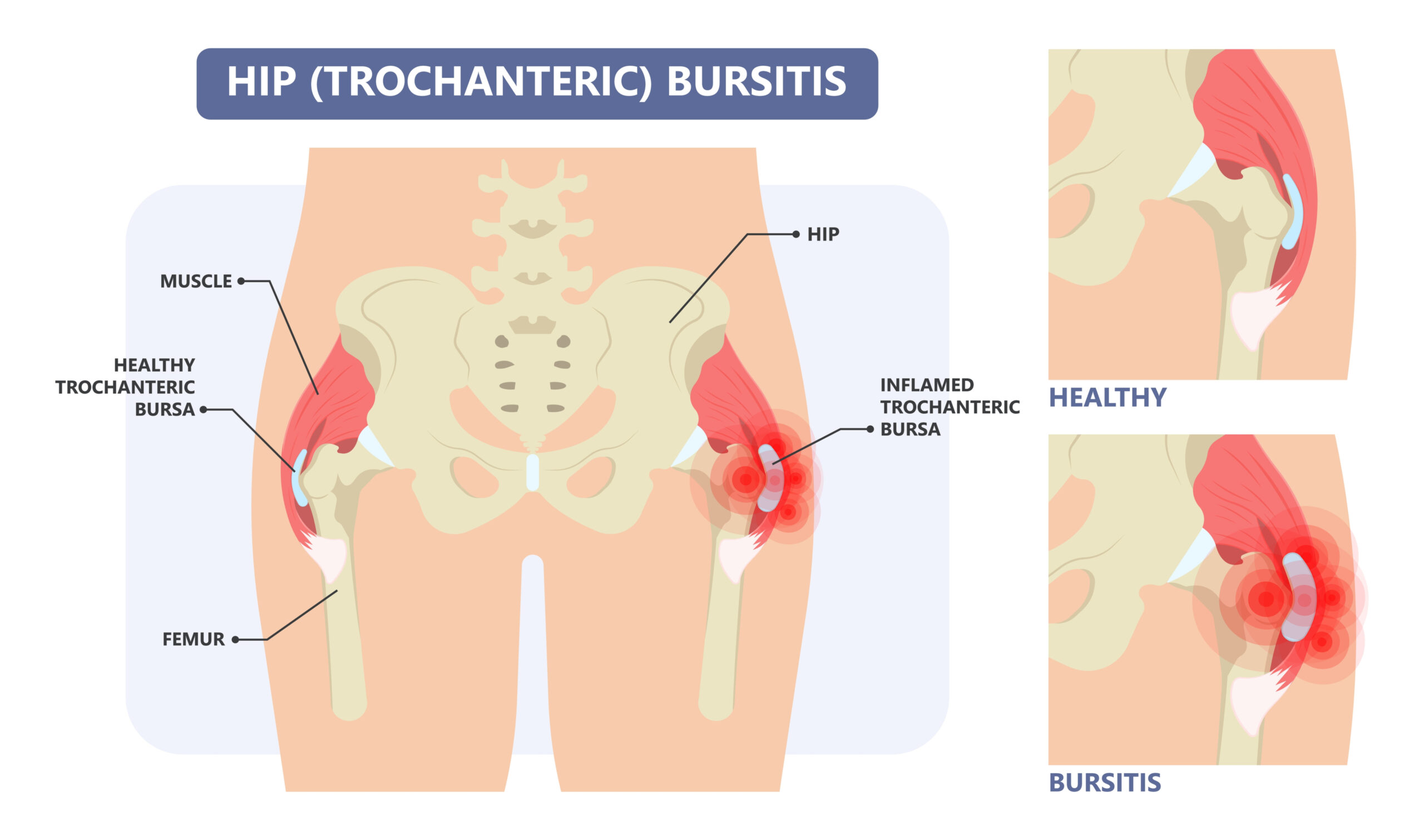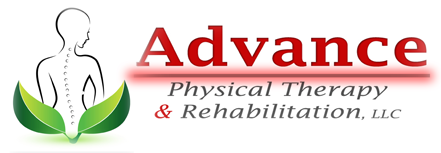
24 May Physical Therapy for Hip Bursitis: Best Exercises for Hip Pain
Anyone who suffers pain from hip bursitis knows that it can impact your mobility and ability to move. While immobilization and rest were the best treatments for relieving pain, we at Advance Physical Therapy & Rehabilitation also believe that physical therapy for hip bursitis can help reduce symptoms and increase mobility.
With the proper treatment and exercise program, one can strengthen the hip stabilizer muscles and protect vulnerable areas from inflammation. By following some stretching exercises and performing sports physical therapy, you can strengthen the hip muscles without putting too much pressure on the bursa.
What Is Hip Bursitis?
Hip bursitis is a condition present in both passive and active people. The cause can be repetitive movements that cause inflammation of the bursae (fluid-filled sacs surrounding tendons and joints and reduce rubbing between moving parts). Because the adult body contains 160 bursae, other parts can also be susceptible to inflammation and bursitis, including your elbow, knee, shoulder, and thigh.
The most common type of hip bursitis is called trochanteric bursitis, or a condition when the bursa around the trochanter becomes inflamed and painful.
The greater trochanter is your hip’s bone part and the primary connection for the muscles that move the hip joint.
What Causes Hip Bursitis?
Hip bursitis is most common in middle-aged or older people, although it can affect anyone.
The most usual causes for hip bursitis and pain include:
- Infection of the bursa
- Hip bone spurs
- A hip injury (from an accident or a fall)
- Injury to the hip joint due to hiking, rock climbing, and other sports activities
- Bad posture due to scoliosis or arthritis
- Reaction to prosthetic implants
- Uneven leg length
Whether you have hip bursitis or aren’t sure what’s causing your chronic hip pain, our physical therapists can help. We can identify the cause of the irritation and soreness and offer customized strengthening exercises and treatment plans to reduce pain and improve flexibility.
Trochanteric Bursitis Symptoms
The primary symptom of trochanteric bursitis is lateral hip pain which may vary from a dull ache and soreness to sharp pain.
Other symptoms of hip bursitis include:
- Pain when lying on the affected side
- Pain when sitting down or getting up
- Pain on the outer side of the buttock or thigh
- Pain that worsens with physical activity
A doctor needs to conduct a thorough exam to confirm the condition and set up a diagnosis. The doctor may also ask you to do simple exercises like standing on the affected leg to see your balance and flexibility. If necessary, the doctor will order an MRI or x-ray to verify that the pain is due to hip bursitis.
After the diagnosis, our physical therapist will provide medical advice and create a treatment plan to increase mobility and relieve the stress and pressure on your bursa.
Best Physical Therapy Exercises
The first steps medical experts recommend for treating chronic bursitis and muscle weakness include anti-inflammatory medications and strengthening exercises to help reduce symptoms. If pain persists and reduces your ability to move or walk normally, the doctor may suggest surgery.
At Advance Physical Therapy & Rehabilitation, Inc., surgery is never the first option for our patients. Our sports medicine experts will discuss physical therapy, specific activities, and other treatments to improve your mobility and restore your quality of life.
Exercise For Hip Joint Problems
Doing hip exercises routinely can help reduce bursa swelling, improve mobility, and strengthen the muscles supporting your hips.
Before any motion, it is essential to stretch your legs and arms. Start slowly and stop if you start feeling pain or increased pressure in the hip, knee, or thigh.
Plank
- Lie on your stomach
- Raise yourself from the ground using your arms and core muscles
- Make sure your legs are straight
- Keep your arms in line with your shoulders
- Stay in this position for 20-30 seconds
Hip Bridge
- Lie on your back
- Keep feet flat on the floor
- Bend your legs
- Raise your hips and make sure they are in line with your shoulders and knees
- Slowly move your hips up and down
Leg Raise
- Lie on your side (not on the painful one)
- Compress the thigh muscle of your injured leg
- Lift your leg up to 5-10 inches away from the other
- Keep your leg straight and steady
- Slowly move your leg up and down
Standing Iliotibial Band Stretch
- Cross the uninjured leg in front of the other
- Bend down and reach for the inside of your foot
- Keep your knees straight
- Stay in this position for 20-30 seconds
- Repeat the iliotibial band stretch five times
Rotator Stretch
- Lie down with your back on the ground
- Position the affected leg on the opposite leg
- Push your knee away until you feel stretching in your affected hip area
- Hold for 30 seconds
- Repeat the stretch five times
How Can You Prevent Hip Bursitis?
In most cases, you can’t prevent hip bursitis. However, you can take a few preventative measures to lower the risk of this painful condition.
- Maintain strength and flexibility of hip muscles by exercising
- Avoid physical activities that put pressure on your hips and cause inflammation of the tendons and joints
- Lose weight to lift the strain on your hips
- Avoid repetitive movements that can cause swelling and inflammation of the bursa
How Can a Physical Therapist Help?
A physical therapist will conduct special tests to determine your health, provide medical advice, and design a specific treatment plan to speed up your recovery.
Your custom plan may include exercises and movements you need to perform daily to improve mobility and strengthen your muscles. Most of our patients see improvements after a few weeks of physical therapy.
Get a Custom Treatment Plan and Therapy for Hip Bursitis
Whether you are experiencing soreness in your upper leg or around the hips due to a sports injury, bursitis, or repetitive movements, our physical therapist is ready to help you.
Return to your everyday activities and normal lifestyle by scheduling an appointment with a physical therapist from Advance Physical Therapy & Rehabilitation, Inc. Contact us today at 732-851-7607 to get your personalized treatment plan and discuss therapy solutions.




Sorry, the comment form is closed at this time.